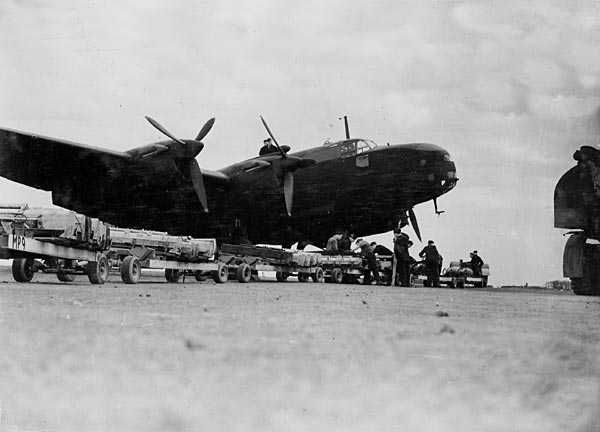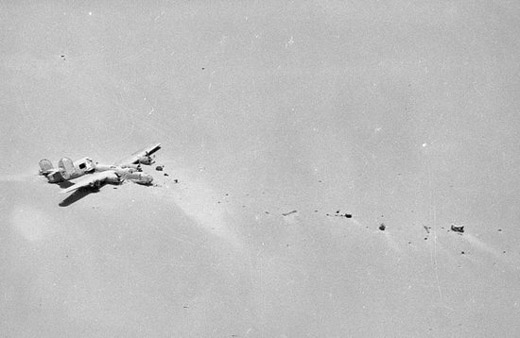Air Operations, Bismarcks
43rd Heavy Bomb Group Command B-17s attack the Kavieng airfield and town area on New Ireland and mount individual attacks against Cape Gloucester.
[Air Operations, CBI
BURMA- 7 7th Heavy Bomb Group B-24s attack the oil refinery at Thilawa.
- 8 341st Medium Bomb Group B-25s attack rail facilities at Maymyo.
- 9 B-25s attack rail facilities at Pyawbwe.
Air Operations, Europe
BOMBER COMMANDDaylight Ops:
- 24 Venturas attack an airfield at Caen, 24 more a shipyard and Rotterdam and 12 a railway target at St Brieuc. All targets are successfully bombed.
- 2 planes from the Rotterdam raid are lost.
- 577 aircraft are sent to Kiel. Included in this total are 203 Lancasters, 168 Wellingtons, 116 Halifaxes and 90 Stirlings.
- The Pathfinders encounter thick cloud and strong winds over the target area which makes it difficult for accurate marking. Decoy fire sites may have also drawn off some of the bombing.
- 5 Lancasters, 4 Halifaxes, 2 Stirlings and 1 Wellington are lost.
Loading a Halifax |
 |
- US bombers raid the Renault plant on the outskirts of Paris and prepare for a similar mission to Antwerp the following day.
- German aircraft drop mines in the Thames Estuary.
Air Operations, Mediterranean
Naples, Palermo and Syracuse in Sicily, and Carloforte in Sardinia are heavily bombed. Official sources put the dead in Naples alone at 221 with 387 injured.
|
|
Air Operations, New Guinea
- 43rd Heavy Bomb Group B-17s mount individual attacks against Salamaua.
- V Bomber Command B-25s and A-20s attack ground targets and Huon Gulf, Kitchen Creek, and two other areas.
Air Operations, Tunisia
- NASAF B-25s attack the El Djem landing ground.
- NAAF P-38s dive-bomb a beached freighter at Cape Zebib.
- NATBF A-20s attack La Fauconnerie Airdrome.
- NATBF B-25s attack the El Djem landing ground and Ste.-Marie du Zit Airdrome.
- NAAF and IX Fighter Command Fighters, escorting various bomber missions, attack numerous ground targets throughout the battle area. In four separate engagemens USAAF pilots down 5 Bf-109s and 1 Mc-202.
North Africa
TUNISIAThe IX Corps, the 18th Army Group reserve, prepares for an offensive to recover Fondouk Gap. The US 34th Div, which is to participate, is transferred to the IX Corps. In the US II Corps area, the 1st and 9th Divs continue their futile efforts to clear the Gumtree and Gabès roads.
The British 8th Army, preparing for an assault on the Wadi Akarit line, has nearly 500 tanks concentrated in the region.
[Pacific
The US submarine Porpoise (SS-173) sinks the Japanese whaling ship Koa Maru (1142t) near Eniwetok Atoll.
[
